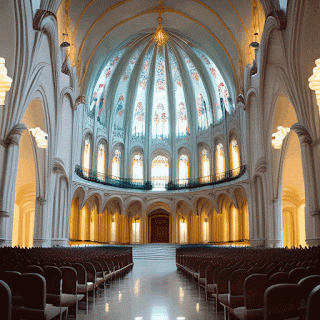Architectural Artist
Architecture is the art and science of designing buildings and structures.
Title: The Enchanting Symphony of Architecture: From Passion to Profession
Introduction:
Architecture, a harmonious blend of art and science, has captivated mankind for centuries. Its importance goes far beyond designing buildings; it shapes the way we experience spaces, impacts our daily lives, and even influences our hobbies, career choices, and personal collections. In this blog article, we will unveil the profound significance of architecture as an art form and explore its ripple effects on various facets of our lives.
1. Brief Description:
Architecture is the artistic manifestation of our society's values, beliefs, and aspirations. It combines aesthetics, functionality, and innovation, resulting in breathtaking structures that transcend time. From grand cathedrals to sleek skyscrapers, every architectural marvel tells a unique story while leaving an indelible imprint on the landscape.
2. Hobbies:
For many, architecture serves as a compelling hobby, indulging their imaginative flair and nurturing their creative souls. Amateurs delve into modeling, sketching, or even photography to capture an essence that words alone can't express. It becomes a passionate dalliance, providing an outlet for self-expression and an avenue to interpret the world architecturally.
3. Career:
Architecture is both an esteemed profession and a rewarding career choice. Architects possess a unique ability to shape environments that resonate with people on a deep level. They blend practicality, aesthetics, and sustainability to create spaces that cater to human needs. The impact they make extends beyond mere buildings; it shapes communities, promotes cultural identity, and improves the overall quality of life.
4. Collection:
Architecture is not just confined to the physical realm; it finds its way into the collections of art enthusiasts. Collecting architectural drawings, blueprints, or even miniature replicas of iconic structures becomes a way to appreciate and preserve the art form. These tangible pieces of architectural history serve as reminders of human achievement and artistic brilliance.
5. Importance and Side Effects:
The significance of architecture extends beyond its aesthetic value. It profoundly impacts our physical, emotional, and social well-being. Thoughtfully designed spaces can evoke emotions, enhance productivity, and foster a sense of community. For instance, the Guggenheim Museum in Bilbao, Spain, not only showcases exceptional modern art but also revitalized the entire city, attracting tourists and boosting the local economy.
However, like any other art form, architecture also has its side effects. Uninspiring designs devoid of cultural sensitivity or sustainable practices can lead to soulless living environments. Poorly planned structures can impact natural resources, perpetuate urban heat islands, and contribute to environmental degradation.
Conclusion:
Architecture emerges as a multidimensional art form that captivates, inspires, and transforms. Its importance permeates our personal lives, hobbies, professional choices, and even our collections. The responsibility lies with architects and lovers of architecture to ensure that the spaces we inhabit enhance our lives, resonate with our souls, and contribute positively to the world at large.
So, whether you find solace in sketching architectural marvels, aspire to shape cities from inception, or simply admire the intricate detailing of an architectural masterpiece, never underestimate the profound impact architecture can have on our lives. Embrace its beauty, celebrate its creativity, and let the enchanting symphony of architecture continue to inspire generations to come
The word architecture comes from the Greek arkhitekton, "master builder, director of works," from αρχι- (arkhi) "chief" + τεκτων (tekton) "builder, carpenter".
A wider definition would include the design of the built environment, from the macrolevel of town planning, urban design, and landscape architecture to the microlevel of creating furniture. Architectural design usually must address both feasibility and cost for the builder, as well as function and aesthetics for the user.
In modern usage, architecture is the art and discipline of creating, or inferring an implied or apparent plan of, a complex object or system.
The term can be used to connote the implied architecture of abstract things such as music or mathematics, the apparent architecture of natural things, such as geological formations or the structure of biological cells, or explicitly planned architectures of human-made things such as software, computers, enterprises, and databases, in addition to buildings.
In every usage, an architecture may be seen as a subjective mapping from a human perspective (that of the user in the case of abstract or physical artefacts) to the elements or components of some kind of structure or system, which preserves the relationships among the elements or components. Planned architecture manipulates space, volume, texture, light, shadow, or abstract elements in order to achieve pleasing aesthetics.
This distinguishes it from applied science or engineering, which usually concentrate more on the functional and feasibility aspects of the design of constructions or structures.
In the field of building architecture, the skills demanded of an architect range from the more complex, such as for a hospital or a stadium, to the apparently simpler, such as planning residential houses. Many architectural works may be seen also as cultural and political symbols, or works of art.
The role of the architect, though changing, has been central to the successful (and sometimes less than successful) design and implementation of pleasingly built environments in which people live.
Are you an Architectural Artist Wants to Grow your (Youtube channel)(Instagram followers)(fb page) Audience Contact here
